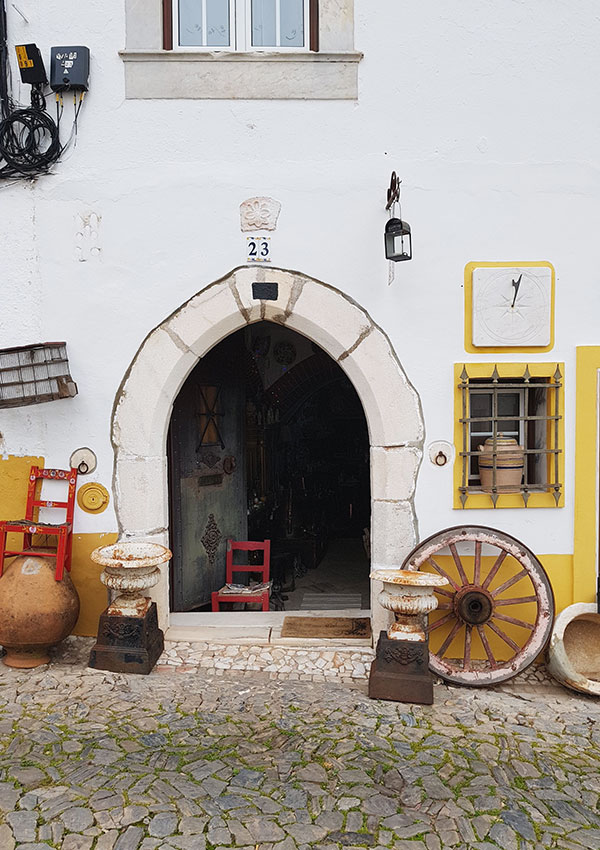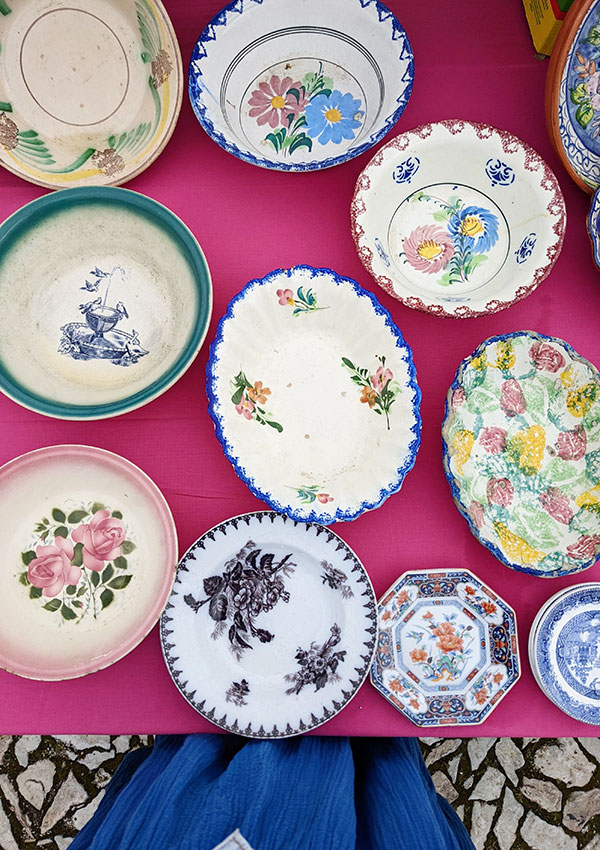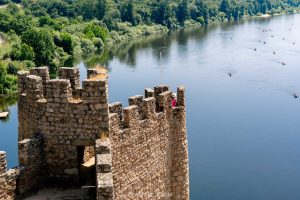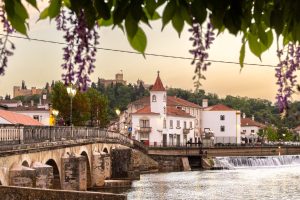The first time I visited Estremoz it was bucketing rain and I was trying not to slip on the tessellated marble pavement on the short walk between the car and the tasca. We were on our way to Seville for the Feria de Abril and Estremoz was the perfect midway point to stop, stretch and eat lunch. We stepped into A Venda Azul. Having had a late breakfast, one dish between four would be plenty. On the waiters recommendation, a mixed grill platter of porco preto, aka black pork, aka the best pork I’ve ever eaten in my life, arrived. “Mais um, por favor” we said ordering another. Life changed forever.
That was pre-pandemic, and since I live in Lisbon it’s only a 90-minute drive so I’ve been back to Estremoz many times since. If you’re planning a day trip or weekend in Estremoz, here’s a guide to the best things to do, great restaurants, and top hotels around the small city.
Contents
ToggleWhat’s the story of Estremoz, the ‘White City’?
Estremoz is deep in the Alentejo region, a huge province known for its agriculture. Black pigs, sheep and cows graze beneath the never-ending fields of cork and olive trees. White-washed quintas with mustard yellow or cobalt blue trim dot the hillside, surrounded by medieval castle walls and creeping grape vines. Time moves slowly, people make more time for you, and I find people don’t speak so quickly either – ideal for practising Portuguese!
But the nickname the ‘White City’ doesn’t come from the colour of the houses. Near Estremoz are dozens of white marble mines that have made Portugal the second-largest exporter in the world. Marble has been extracted from the earth here since Roman times, and in town it’s hard to miss the striking 27-metre-high marble keep that dates back to the 14th century. You can climb the tower and even stay in the Pousada Castelo de Estremoz, where kings and queens once lived.
While human presence in this area dates back to at least the Paleolithic period, Estremoz has officially been a town since 1258. Great battles have played out here, two of which were decisive for the independence of Portugal.



Best things to do in Estremoz
Explore the old town and castle
Step inside the Castelo de Estremoz through one of four doors in the castle walls. Built in the 13th century, once inside wander a labyrinth of cobbled streets seeking antiques, coffee or cats to pat.
Climb the marble tower
Portugal is a relaxed, open country. The tallest building in Estremoz is the white marble Torre das Couraças. It is 28 metres high and was built in the 17th century. Now part of a luxury hotel, the Pousada Castelo de Estremoz, just slip through the foyer, into the courtyard on the left and up the many, many storeys to the terraces or rooftop. The views from here are unbeatable.
Admire art nouveau architecture
I am absolutely dead for the building where Café Águias D’Ouro is. Built between 1908 and 1909 every window in the three-storey building is different.
Find Queen Isabel
Portugal’s King Dinis and Queen Isabel lived here from 1281. You can step into her former bedroom, which is now a tile-lined chapel (Capela da Rainha Santa Isabel) and admire a statue of her in the square near the tower.
Go for the orange trees
The streets of Estremoz are mostly lined with orange trees. They are heavy with fruit in wintertime and look amazing against the white-washed buildings and marble footpaths.
Read next… 18 best places to visit in the Alentejo: prettiest villages, towns and cities
Where to eat in Estremoz
A Venda Azul
It’s hard to over emphasise how this tiny local diner changed my life. Seriously, this was the best pork I’ve ever eaten and I’m not surprised. The Alentejo region is the land of Iberico ham. What do they do with the rest of the acorn-fed pigs?
Casa do Pixa Negra
Sit between absolutely giant Alentejo-style wine pots knocking back the house red with traditional plates and slow service. We found lots of more unusual, typical Alentejo dishes that are hard to find elsewhere.
Read next… Hotel Review: A dreamy weekend at Hotel Convento de São Paulo
Read next…
- 48 hours in Monsaraz
- 48 hours in Évora
- Portugal Road Trip: Where to stop between Lisbon and Porto
- Best tile painting workshops in Lisbon, Porto and the Algarve
- 22 most beautiful castles in Portugal
- 16 most beautiful villages and small towns in Portugal
- Portugal’s pottery village: Why you should visit São Pedro do Corval
- Bottomless wine and secret cellars: Redondo’s tasca and talha trail














2 Responses
Hi Daniela! Love your articles. I am looking for a Village to retire to, but it ‘must’ have public transportation as I plan to ditch the car, and ‘affordable’ little homes. My budget is 20,000. Can you point me in the right direction?
Thank you, Lilly R.
Hi Lilly, I’m afraid I don’t know too much about the real estate market, but while cost of living here is still very good real estate is often comparable to the rest of Europe. It may be due to red tape – so places with approvals to build/live are worth more along with foreign investment driving up prices. I’ve heard the Silver Coast is more affordable – north of Lisbon, south of Aveiro – and may have train/bus connections. Inland villages will be the cheapest. Most areas seem to have bus connections but I wouldn’t trust them to be frequent or reliable. Sorry I can’t be more help!